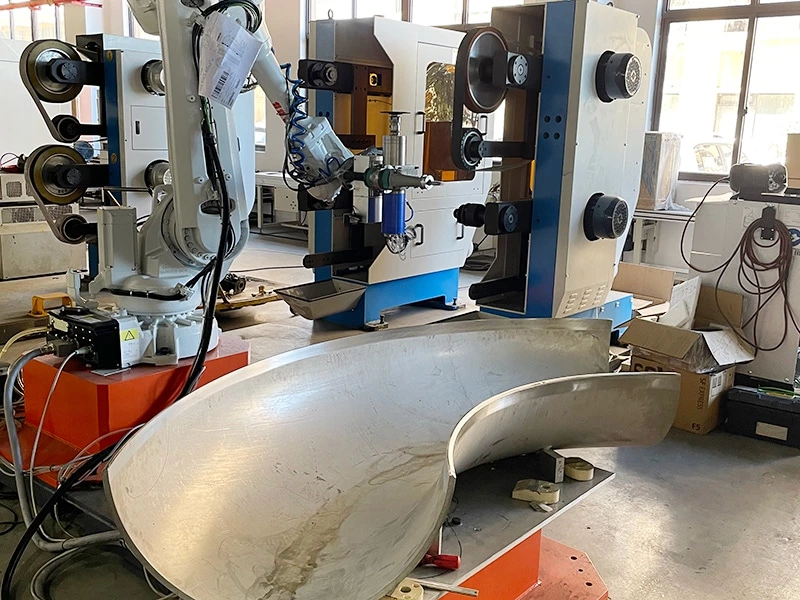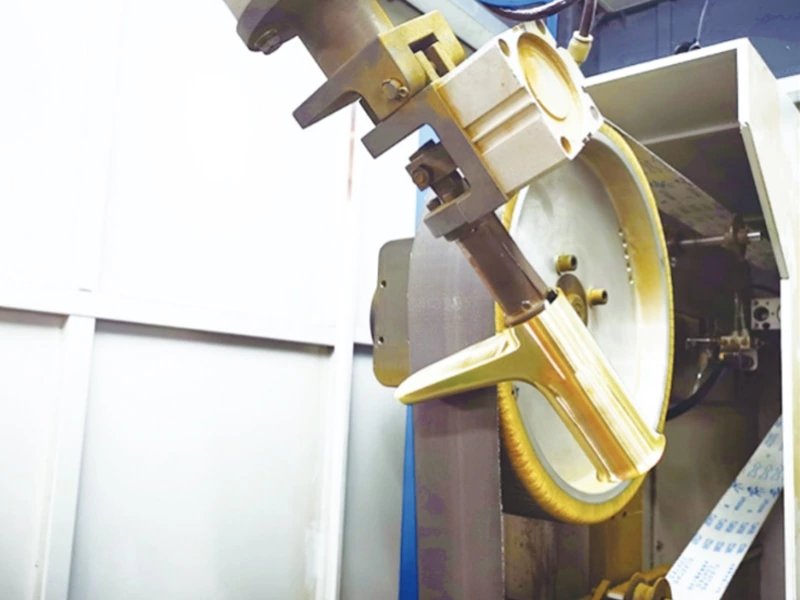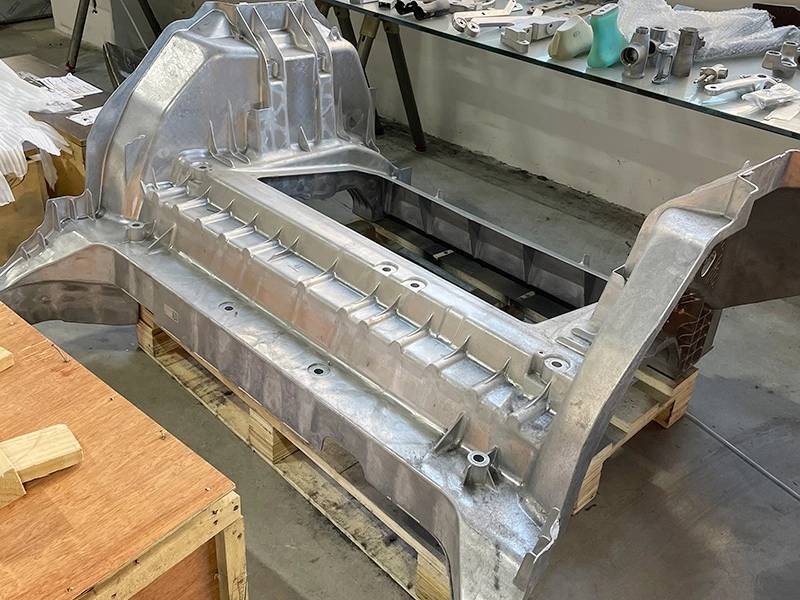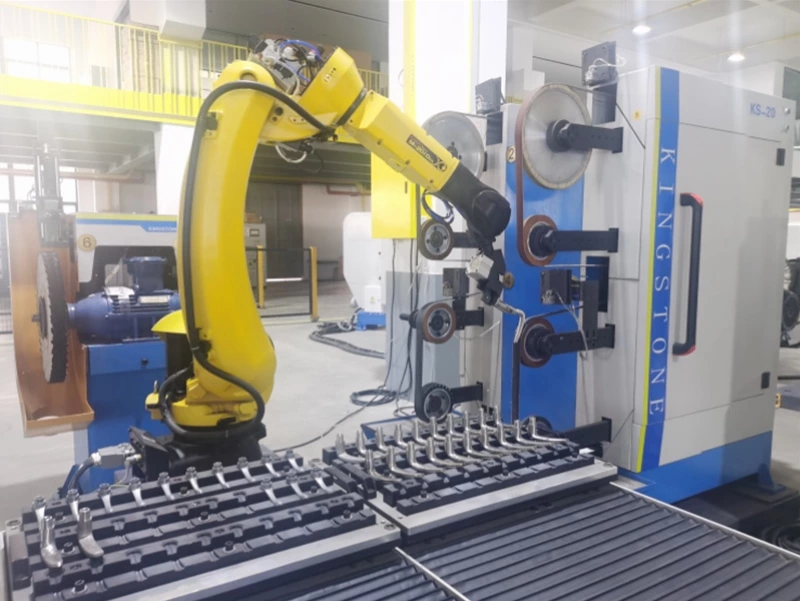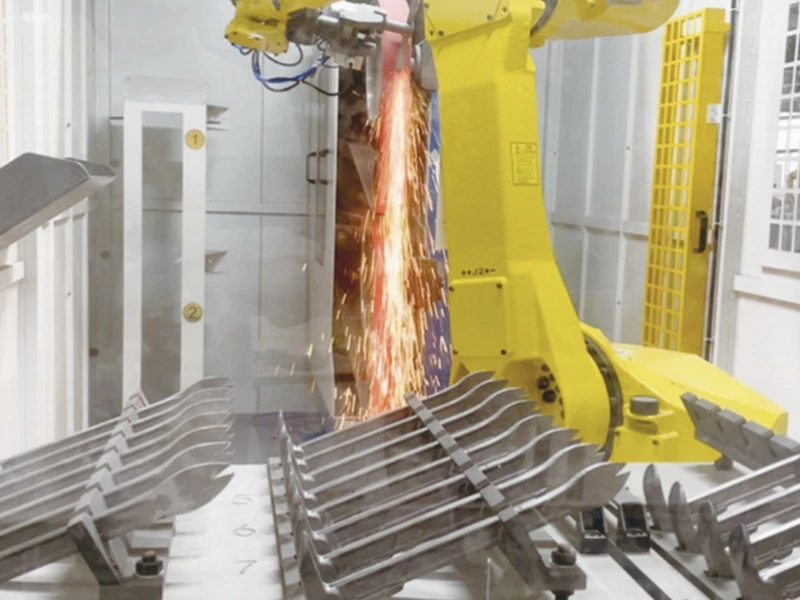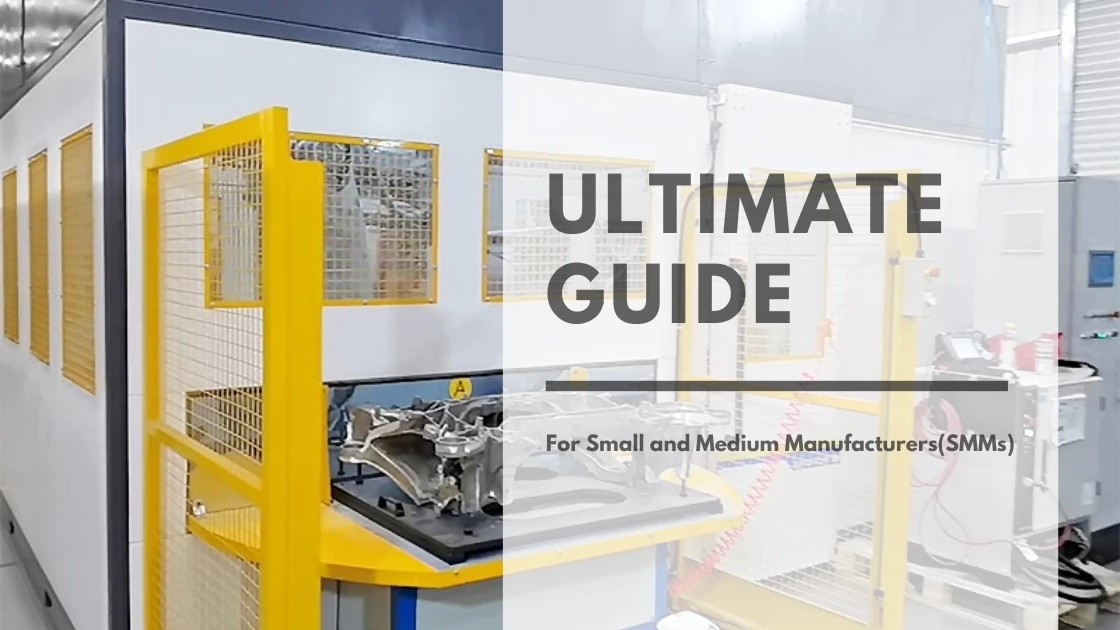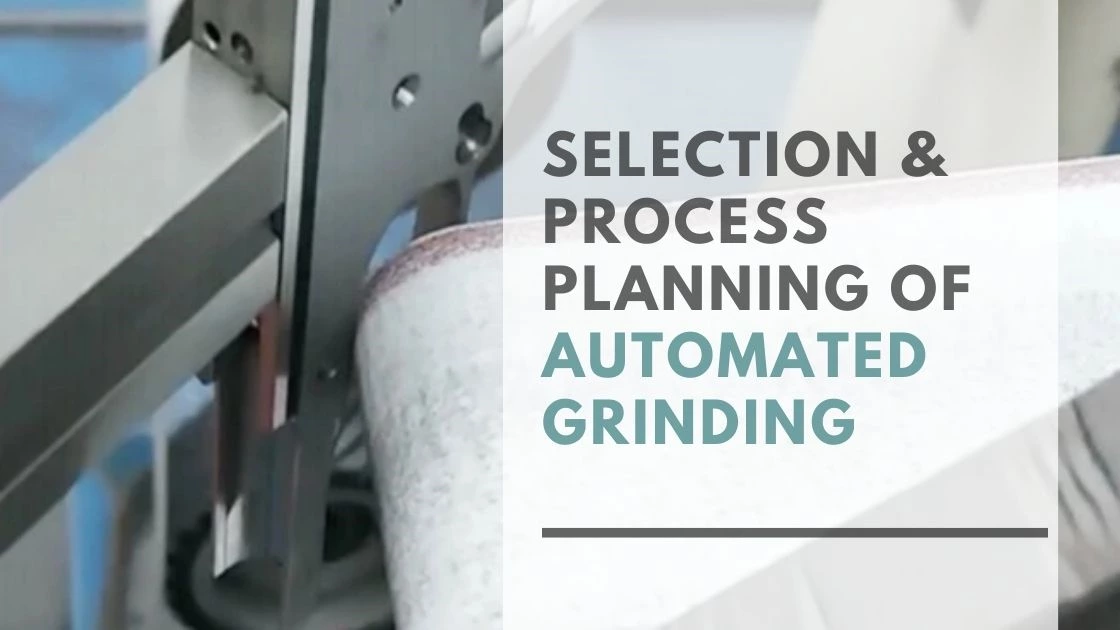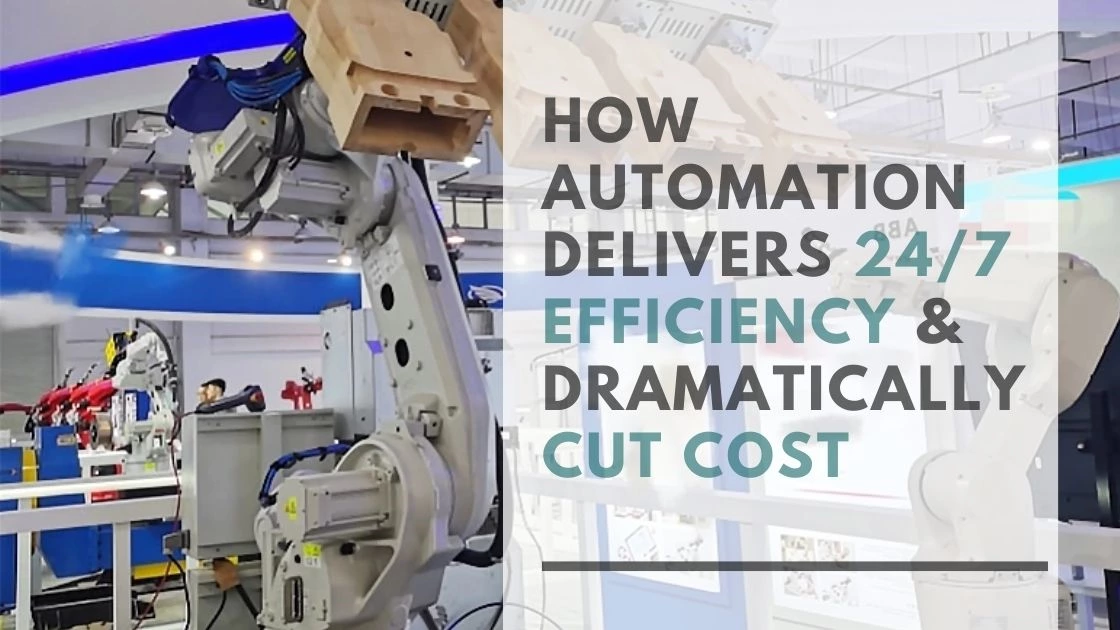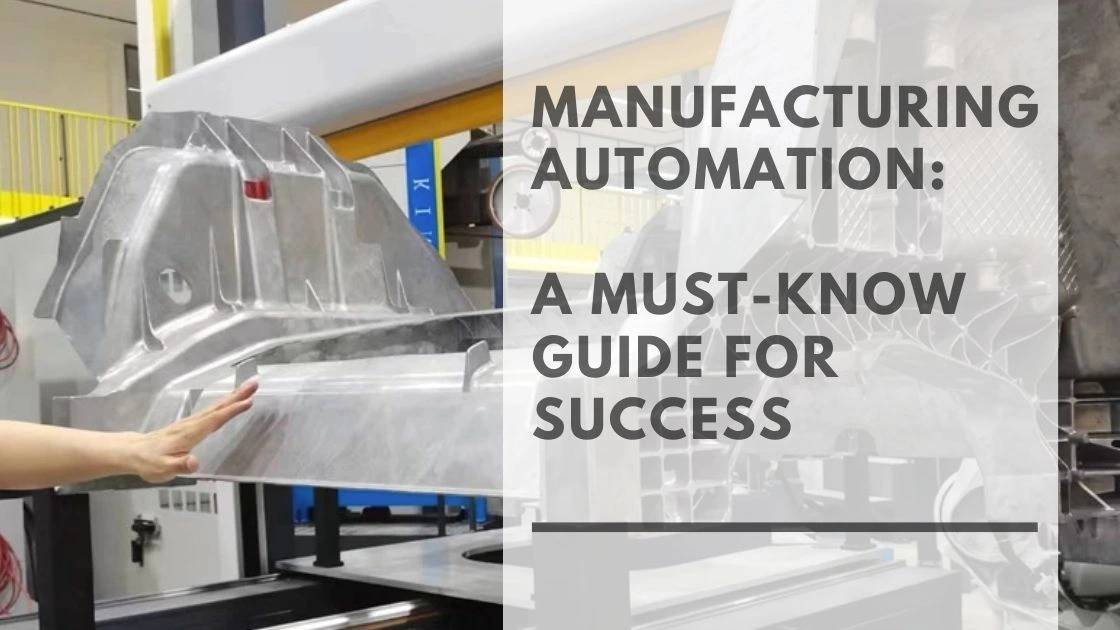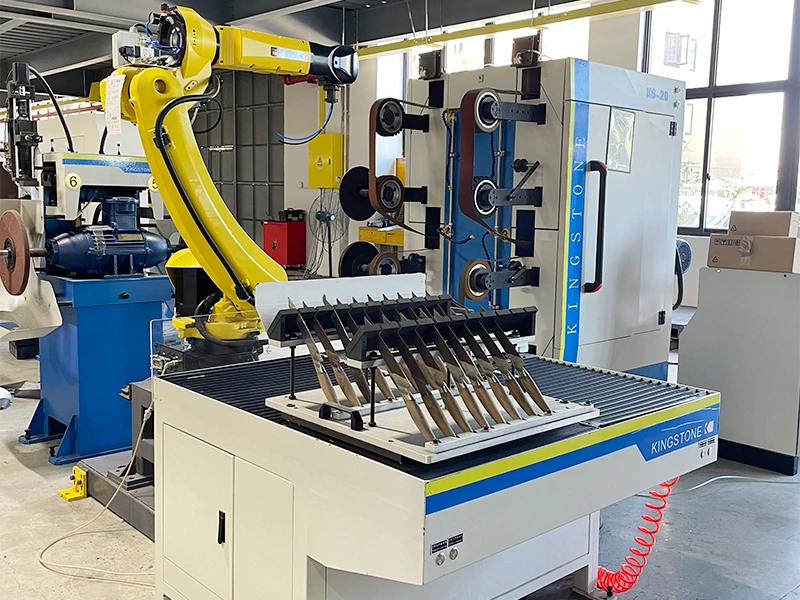Robotic Grinding: How Automation Delivers 24/7 Efficiency and Dramatically Cuts Costs
The Manufacturing Revolution with Robotic Grinding
In today’s highly competitive manufacturing landscape, companies must constantly strive to improve productivity, reduce operational costs, and maintain the highest standards of product quality. Manual grinding, once a staple in industrial production, is increasingly falling short due to labor shortages, rising costs, and quality inconsistencies.
Robotic grinding presents a transformative solution, offering uninterrupted, high-precision performance with minimal operational costs. Unlike manual methods, which depend on worker availability, robotic grinding systems operate 24/7, ensuring a steady production flow, improved quality, and enhanced workplace safety. This shift toward automation is helping manufacturers meet growing demand while staying competitive in an evolving market.
The Hidden Costs of Manual Grinding
Despite being widely used, manual grinding introduces several operational inefficiencies that significantly impact manufacturers.
1. Rising Labor Costs and Workforce Challenges
Manufacturing industries worldwide are experiencing a growing shortage of skilled labor, making manual grinding an increasingly expensive and inefficient process. Several factors contribute to this challenge:
- Shortage of skilled workers drives up wages, making labor-intensive processes less sustainable.
- High turnover rates in grinding roles lead to increased recruitment and training expenses.
- Indirect costs such as worker insurance, healthcare benefits, and compliance with labor safety regulations continue to rise.
In contrast, robotic grinding systems eliminate these concerns, as they operate continuously without the need for breaks, sick leaves, or training expenses. The result? Lower labor costs and higher operational efficiency.
Related Reading: How to caculate Return on Investment (ROI) For Automation Projects in Polishing
2. Inconsistent Quality and Reduced Productivity
Manual grinding introduces significant quality control challenges:
- Fatigue-related errors increase as workers get tired, leading to higher defect rates.
- Skill variations among workers result in inconsistent surface finishes.
- Limited work hours restrict production capacity, as most human-operated grinding processes run for only 8-10 hours per day.
With robotic grinding, precision and consistency are guaranteed. Automated force control ensures uniform pressure, preventing over-grinding or under-polishing, which are common in manual processes. This not only reduces material waste but also minimizes rework, ultimately saving time and costs.
3. Workplace Safety and Environmental Risks
Manual grinding presents several health and safety hazards:
- Prolonged exposure to dust and noise can lead to serious occupational diseases, such as respiratory issues and hearing impairment.
- High injury risks due to accidents involving heavy equipment, sparks, and debris.
- Strict environmental regulations necessitate investment in safety measures to mitigate workplace hazards.
Robotic grinding systems address these concerns by integrating advanced safety mechanisms such as automated dust extraction, soundproof enclosures, and real-time safety monitoring. These features protect workers from hazardous conditions while ensuring compliance with industry regulations.
How Robotic Grinding Transforms Manufacturing
The transition from manual to robotic grinding provides a range of benefits that enhance efficiency, lower costs, and improve product quality.
1. Unparalleled Productivity and Cost Efficiency
One of the most significant advantages of robotic grinding is its ability to operate continuously without interruptions. Consider the following comparison:
- Manual grinding: Typically runs for 8-10 hours per day, handling around 3,000 parts.
- Robotic grinding: Runs 24/7, increasing output by 200-300%, achieving up to 9,000 parts per day.
This boost in production allows manufacturers to meet higher demands without additional labor costs, ultimately maximizing ROI (Return on Investment) and overall efficiency.
2. Consistently High-Quality Finishing
Robotic grinding systems use advanced force-control technology, ensuring that every product meets the same exacting standards. With 99% accuracy, these systems drastically reduce:
- Defective parts, cutting down on waste.
- Variability in finishes, ensuring uniformity.
- Material losses, leading to better cost management.
By automating grinding tasks, manufacturers can achieve a higher first-pass yield, reducing the need for rework and minimizing production delays.
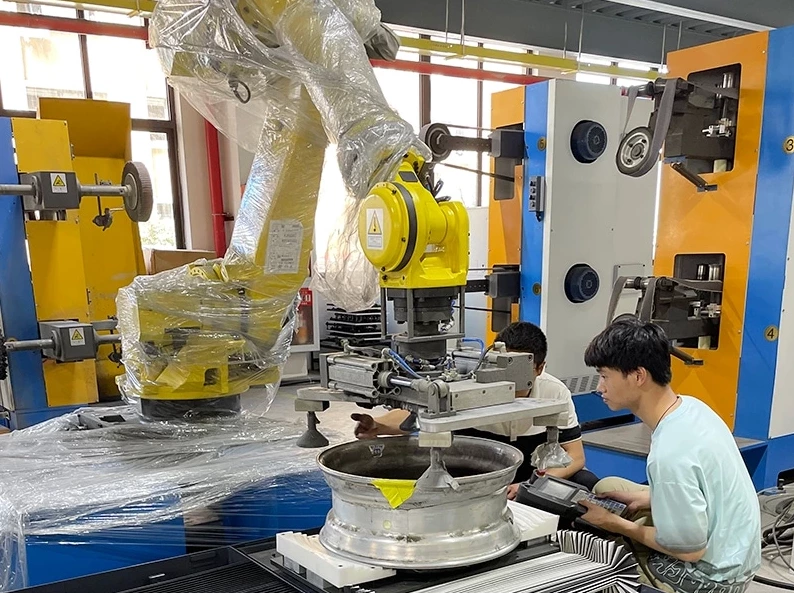
3. Improved Workplace Safety and Environmental Compliance
- Robotic systems are enclosed, significantly reducing worker exposure to dust and noise.
- Automated monitoring systems detect hazards in real time, preventing potential accidents.
- Compliance with environmental standards is easier with robotic systems that include built-in dust extraction and waste management.
The result? A cleaner, safer, and more efficient production environment.
Industries Benefiting from Robotic Grinding
Robotic grinding is revolutionizing several industries by enhancing precision, increasing efficiency, and reducing costs. Some notable success stories include:
1. Automotive Industry: Enhanced Precision & Efficiency
- Case Study (3M Report): A manufacturer improved production rates from 3,000 to 10,000 parts per day by switching to robotic grinding.
- Quality Improvement: Approval rates increased to 99%, ensuring minimal defects.
- Cost Savings: Labor-related expenses reduced by approximately 40%, freeing up capital for other business operations.
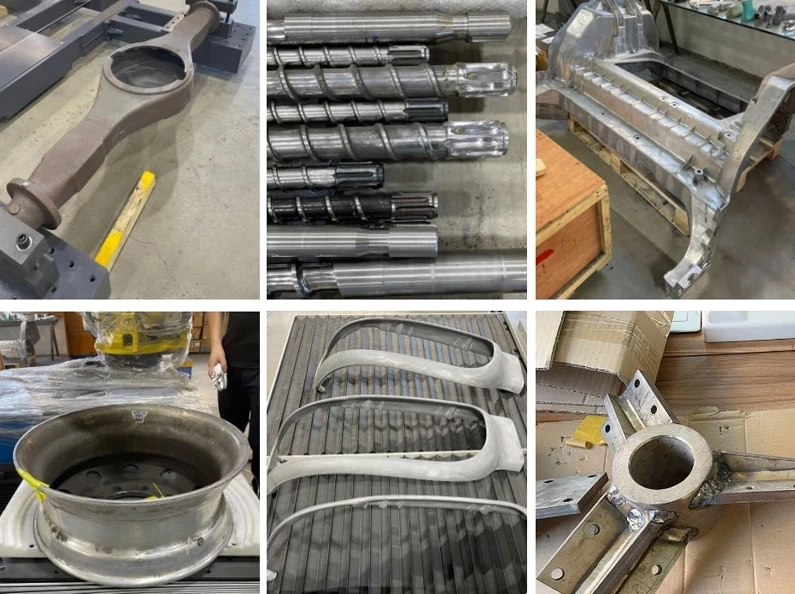
2. Hardware and Sanitaryware Industry: High-End Finishing
- Faucets, showerheads, and metal fixtures require consistent surface polishing.
- Robotic grinding ensures flawless, uniform finishing, reducing defects and enhancing the aesthetic appeal of products.
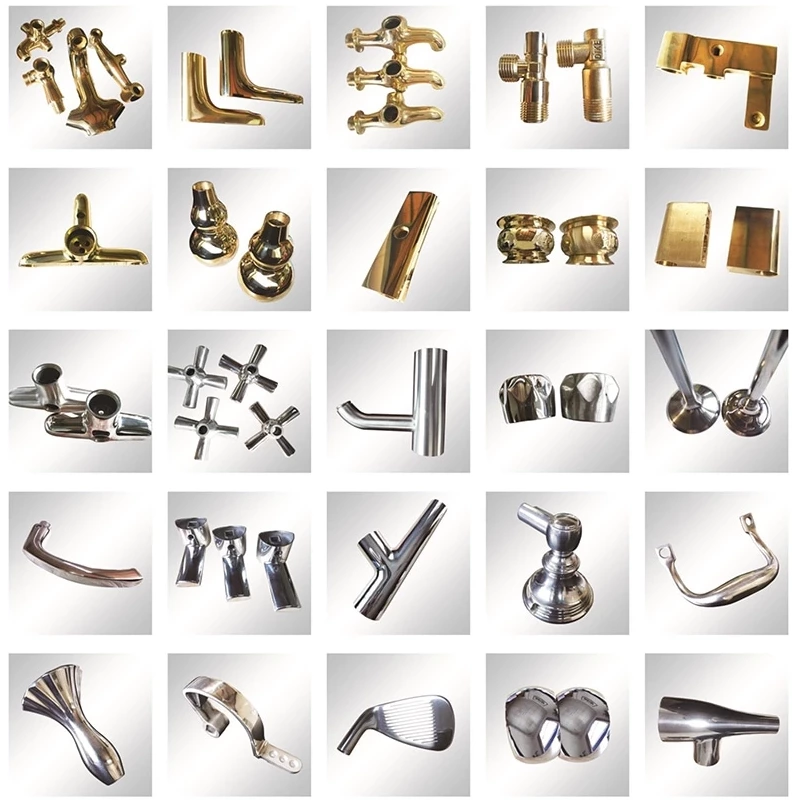
3. Medical Equipment: Meeting Regulatory Demands
- Artificial joints, surgical instruments, and orthopedic implants require ultra-precise grinding.
- Robotic systems guarantee accuracy, ensuring compliance with strict medical industry standards.
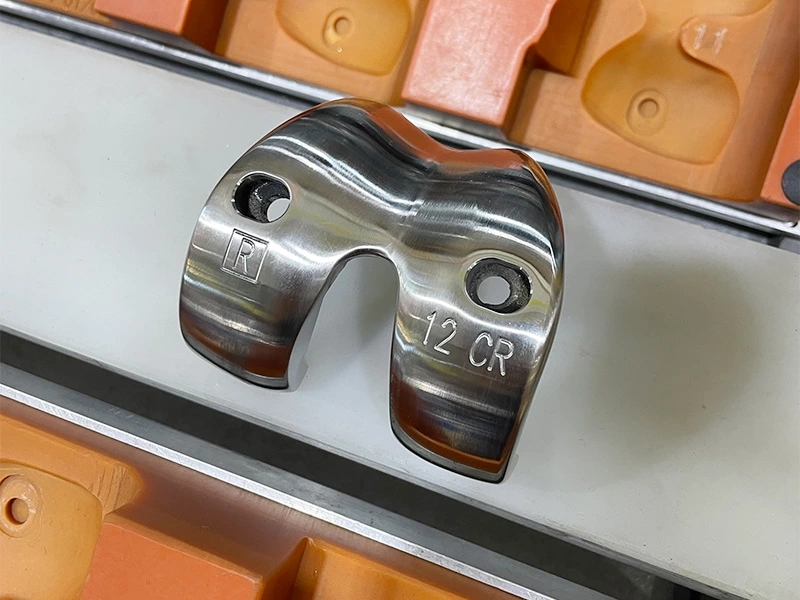
Key Technologies Driving Robotic Grinding
Modern robotic grinding systems utilize cutting-edge technologies to optimize efficiency and accuracy.
1. Adaptive Force Control for Precise Grinding
- Sensors measure and adjust force in real-time, ensuring uniform material removal.
- Prevents over-grinding or under-polishing, maintaining surface integrity.
2. Offline Programming for Rapid Deployment
- Eliminates downtime by allowing engineers to simulate and optimize grinding paths before production.
- Accelerates changeover times, making robotic grinding adaptable to multiple product lines.
3. Multi-Axis Robotic Movement for Complex Surfaces
- Six-axis robotic arms allow for precise grinding on curved and irregular surfaces.
- Enables high-precision finishing for aerospace, medical, and high-end industrial components.
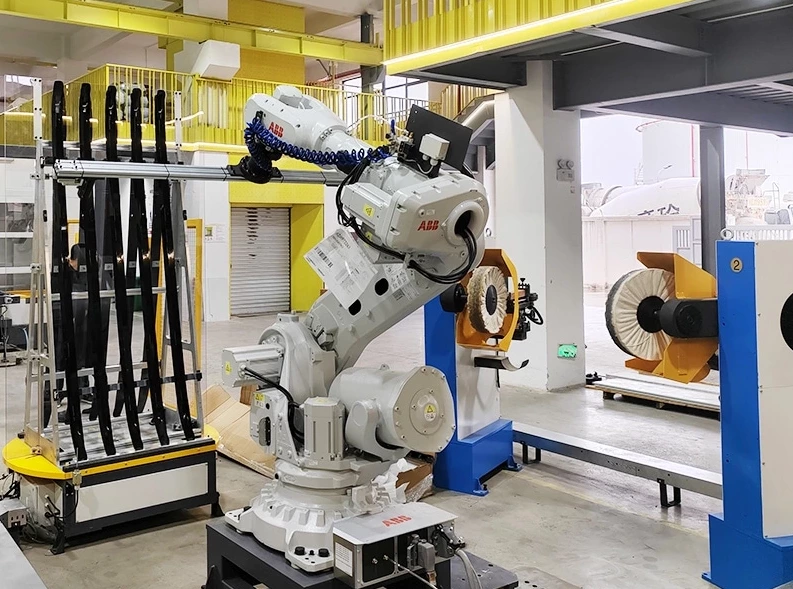
4. Automated Safety & Dust Extraction
- Reduces airborne contaminants, improving worker safety.
- Ensures compliance with environmental and workplace health standards.
Implementing Robotic Grinding in Your Factory
Transitioning to robotic grinding requires a structured approach to maximize ROI and operational efficiency.
Step 1: Choose the Right Automation Solution
- Consider workpiece materials, size, and complexity.
- Select modular robotic systems or customized automation setups.
Step 2: Optimize Production Through Smart Programming
- Utilize offline programming to reduce setup time.
- Train operators on system integration for seamless deployment.
Step 3: Automate Safety & Environmental Compliance
- Integrate dust extraction and noise reduction systems.
- Ensure compliance with regulatory standards to maintain sustainability.
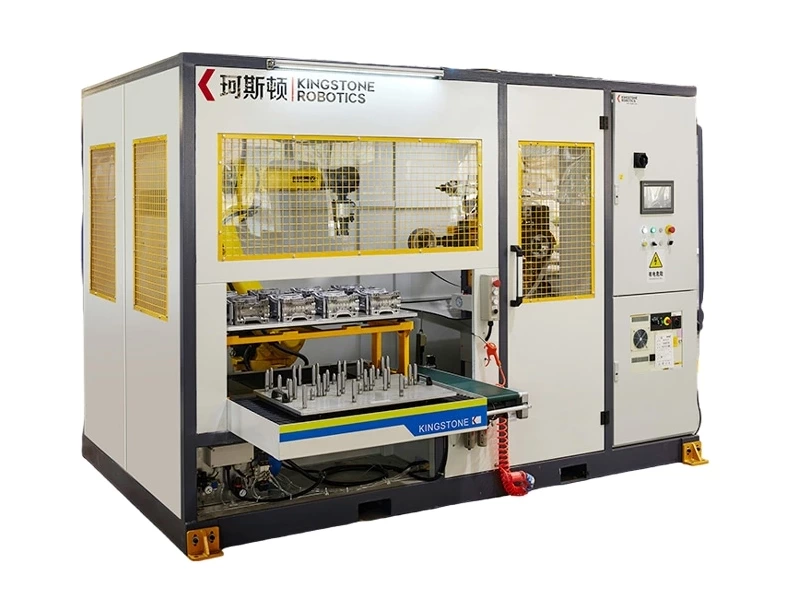
The Future of Manufacturing: Why Now is the Time to Automate
The manufacturing industry is undergoing a major transformation as automation becomes the new standard. Here’s why businesses are embracing robotic grinding:
- Rising labor costs make automation a cost-effective solution.
- Stricter quality demands necessitate higher consistency and precision.
- Environmental and workplace safety regulations push manufacturers toward cleaner, safer processes.
Conclusion: Embrace Robotic Grinding for a Competitive Edge
Robotic grinding is not just an upgrade—it’s a necessity for manufacturers seeking growth, efficiency, and quality assurance. If you’re looking to reduce costs, improve consistency, and enhance workplace safety, automation is the solution.
Ready to Transform Your Manufacturing?
Visit KS Robotics to explore:
- Detailed case studies
- Expert consultations
- Tailored robotic grinding solutions
Unlock your manufacturing potential with robotic grinding today!
Reference
3M. (n.d.). 3M official website. Retrieved March 16, 2025, from https://www.3m.com/
Automation World. (n.d.). Automation World official website. Retrieved March 16, 2025, from https://www.automationworld.com/
McKinsey & Company. (n.d.). McKinsey & Company official website. Retrieved March 16, 2025, from https://www.mckinsey.com/
Occupational Safety and Health Administration (OSHA). (n.d.). OSHA official website. Retrieved March 16, 2025, from https://www.osha.gov/

